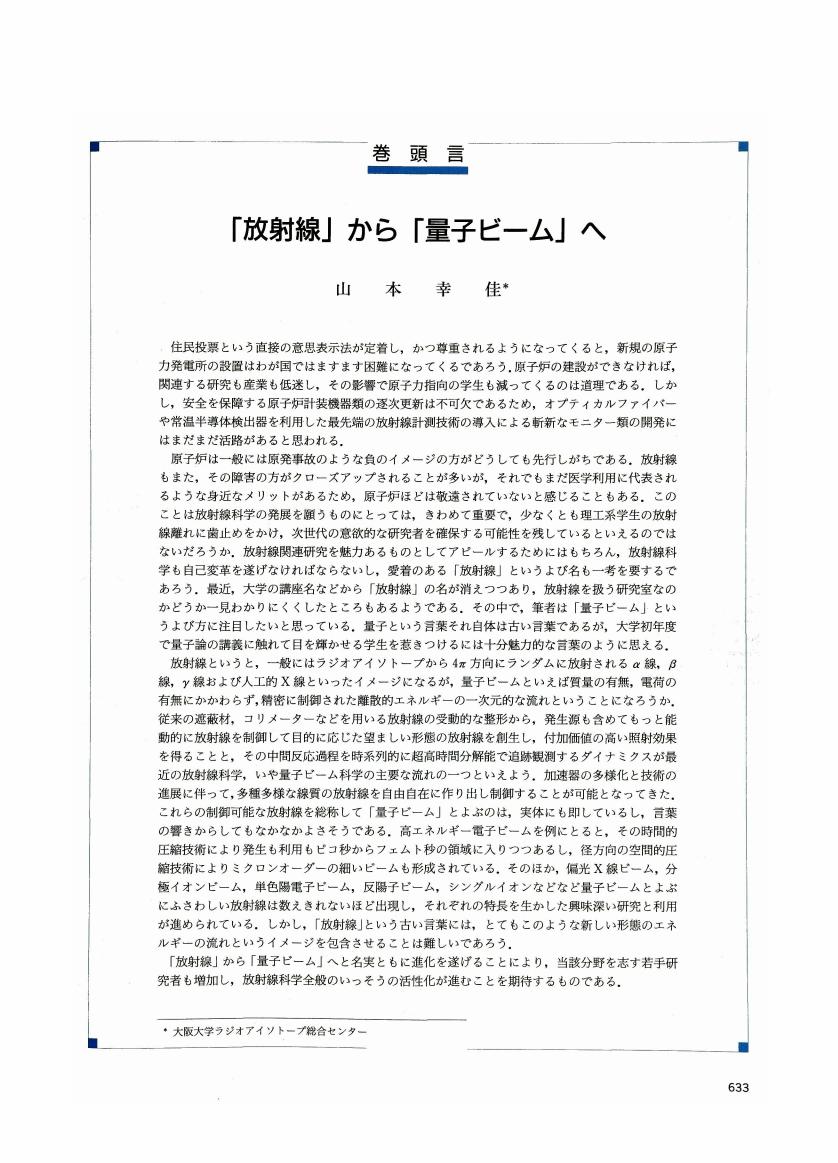6 0 0 0 OA 「放射線」から「量子ビーム」へ
- 著者
- 山本 幸佳
- 出版者
- 公益社団法人 応用物理学会
- 雑誌
- 応用物理 (ISSN:03698009)
- 巻号頁・発行日
- vol.67, no.6, pp.633, 1998-06-10 (Released:2009-02-05)
4 0 0 0 OA 成層圏における環境放射線モニタリング
- 著者
- 宮本 由香 山本 幸佳
- 出版者
- 日本放射線安全管理学会
- 雑誌
- 日本放射線安全管理学会誌 (ISSN:13471503)
- 巻号頁・発行日
- vol.12, no.1, pp.19-20, 2013 (Released:2013-07-26)
1 0 0 0 OA リアルタイム PCR 法を用いた DNA 損傷の定量化とその放射線量評価法への応用
- 著者
- 清水 喜久雄 中嶋 隆登 松尾 陽一郎 日高 雄二 佐藤 典仁 山本 幸佳
- 出版者
- 日本放射線安全管理学会
- 雑誌
- 日本放射線安全管理学会誌 (ISSN:13471503)
- 巻号頁・発行日
- vol.15, no.1, pp.52-58, 2016 (Released:2016-07-26)
- 参考文献数
- 16
The biological dosemeter that directly reflects cellular responses to ionizing radiations in living organisms would be useful for the protection of human health against exposures. We are aiming at developing a novel dosimetric system using DNA molecules as a radiation sensor. DNA molecules are irradiated and the resulting DNA damages are quantified by real-time PCR (quantitative PCR, qPCR) reactions. We investigated DNA lesions caused by gamma ray or carbon ion particle irradiation and revealed that the extent of DNA amplification negatively correlated with the greatness of LET of exposed radiations. While ionizing radiations elicit not only DNA strand breaks but 8-hydroxy-2′-deoxyguanosine (8-OHdG) production, the amount of 8-OHdG produced by the high-LET carbon ion particle irradiation was at a similar level to that by low-LET gamma ray irradiation, demonstrating that 8-OHdG production was not affected by the greatness of LET. These results suggest that the extent of DNA strand breaks, not the amount of base damages such as 8-OHdG, is influenced by the greatness of LET and causes negative effect on DNA amplification.
